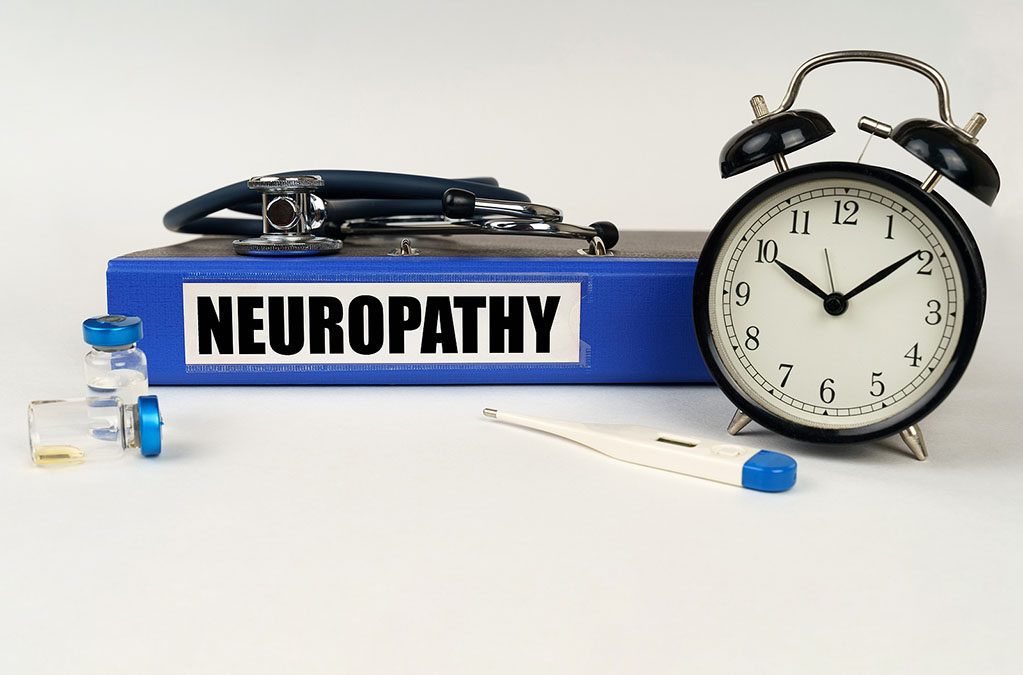 Neuropathy damages nerve fibers in a way that is believed by the traditional medical system to be irreversible.
Neuropathy damages nerve fibers in a way that is believed by the traditional medical system to be irreversible.
However, a new study in the Journal of Pharmaceutical Negative Results reveals a simple, non-invasive method that can restore nerve function and drastically reduce pain and numbness.
Best of all, this simple method causes no side effects.
The researchers recruited 60 diabetes patients from two hospitals in Komarapalayam, India, and divided them into two groups: one that would receive MRT (matrix rhythm therapy) plus a normal exercise program and one that would receive the exercise program alone.
Because exercise stimulates nerves and muscles, promotes blood flow (which is usually impaired in diabetes patients), and improves postural control, it is the standard treatment for diabetic neuropathy.
In this study, both groups performed flexibility, aerobic, balance, and strengthening exercises for 30 minutes, but the first group also received a 30-minute MRT session before the exercises.
The active treatment period was six weeks, after which all participants were observed for four months.
Both the exercise program alone and the MRT plus exercises were effective at improving postural control and quality of life, but the latter was much more effective over the study period.
What exactly is MRT?
MRT was designed in Germany in the 1990s to treat musculoskeletal pain, joint stiffness, and sports injuries, but an increasing number of recent studies supported it to treat and repair damaged tissue.
All of our cells vibrate at the microscopic level, but many injuries and conditions like neuropathy can disrupt this rhythm. The theory is that this natural vibration can be restored using a device that delivers a rhythmic, low-frequency mechanical and magnetic vibration to the body’s tissues.
Once cells can vibrate normally again, blood flow will be restored to the area, and the removal of waste material will be boosted. Using this method, it is possible to repair damaged tissue.
The treatment is available in many countries, including the US, the UK, Australia, and Germany, and is pain-free and non-invasive.

 Overcoming IBD
Overcoming IBD Multiple Sclerosis
Multiple Sclerosis Banishing Bronchitis
Banishing Bronchitis Gum Disease Gone
Gum Disease Gone Overcoming Onychomycosis
Overcoming Onychomycosis Neuropathy No More
Neuropathy No More The Prostate Protocol
The Prostate Protocol Brain Booster
Brain Booster
 Ironbound
Ironbound
 Solution for Shingles
Solution for Shingles
 The Bone Density Solution
The Bone Density Solution
 The Ultimate Healing Protocol
The Ultimate Healing Protocol
 The Parkinson's Protocol
The Parkinson's Protocol
 The Chronic Kidney Disease Solution
The Chronic Kidney Disease Solution
 Overthrowing Anxiety
Overthrowing Anxiety The Fatty Liver Solution
The Fatty Liver Solution The Hypothyroidism Solution
The Hypothyroidism Solution
 The End of Gout
The End of Gout The Blood Pressure Program
The Blood Pressure Program
 The Oxigized Cholesterol Strategy
The Oxigized Cholesterol Strategy
 Stop Snoring And Sleep Apnea Program
Stop Snoring And Sleep Apnea Program
 The Arthritis Strategy
The Arthritis Strategy The Vertigo & Dizziness Program
The Vertigo & Dizziness Program The 3-Step Diabetes Strategy
The 3-Step Diabetes Strategy Hemorrhoids Healing Protocol
Hemorrhoids Healing Protocol The Erectile Dysfunction Master
The Erectile Dysfunction Master Weight Loss Breeze
Weight Loss Breeze The IBS Program
The IBS Program The Insomnia Program
The Insomnia Program The Migraine and Headache Program
The Migraine and Headache Program The Neck Pain Solution
The Neck Pain Solution The Menopause Solution
The Menopause Solution The Ejaculation Master
The Ejaculation Master The TMJ Solution
The TMJ Solution The Acid Reflux Solution
The Acid Reflux Solution The Fibromyalgia Solution
The Fibromyalgia Solution The Psoriasis Strategy
The Psoriasis Strategy